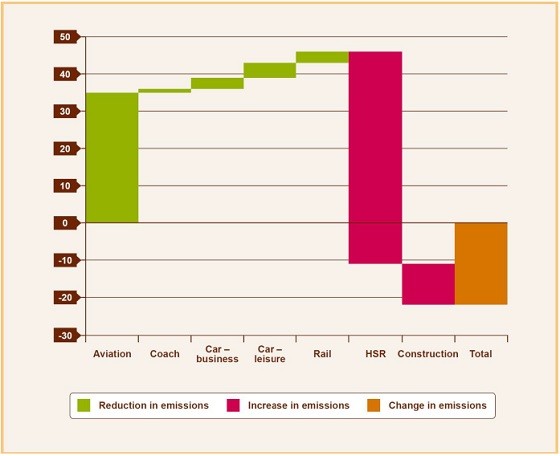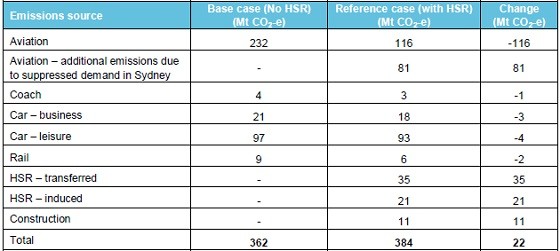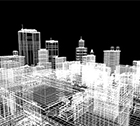
The Commonweath’s new Phase 2 report on High Speed Rail (HSR) forecasts that if HSR is built on the east coast, total emissions from travel in the corridor over the 50 year evaluation period would be 384 million tonnes (Mt CO2-e).
However in the Base Case – which assumes HSR isn’t built – emissions would total 362 Mt CO2-e (see first and second exhibits). That’s 22 million tonnes less than under the HSR scenario!
It’s not that travelling by HSR isn’t greener than flying or driving. Attracting around half of all airplane travellers in the corridor to HSR would reduce emissions from aviation by 116 Mt CO2-e over the period.
There’d also be a further saving of 11 Mt CO2-e from travellers who shifted from cars, coaches and conventional trains to HSR.
On the other side of the ledger, though, HSR itself would emit 35 Mt CO2-e in operation over the 50 year period and a further 11 Mt CO2-e during construction.
Also, based on experience with HSR in other countries, the study reckons there’d be an additional 21 Mt CO2-e due to “induced” travel i.e. additional trips that wouldn’t otherwise have been made but for the improvements in accessibility provided by the HSR network.
That still has HSR ahead although not by as much as many imagine. Total emissions under the HSR scenario would be 303 Mt CO2-e compared to 362 Mt CO2-e in the Base Case.
Now here comes the really interesting and potentially controversial part: suppressed demand.
The Base Case assumes there’d be no increase in aviation capacity in Sydney over the evaluation period i.e. no second Sydney airport and no expansion of Kingsford Smith.
That means there’d be a growing level of suppressed demand for air travel between Sydney and other destinations in Australia and overseas.
However under the HSR scenario, all those Sydney air travellers who change over to bullet trains would release spare capacity at Kingsford Smith airport.
The study argues that capacity would quickly be redeployed to satisfy the suppressed demand for air travel. That would generate a further 81 Mt CO2-e in emissions which the study attributes to HSR.
The final balance sheet for all modes in the corridor has the Base Case emitting 362 Mt CO2-e over the 50 year evaluation period and the HSR scenario emitting 384 Mt CO2-e.
As shown in the first exhibit, even the reduction in aviation emissions would be exceeded by the increase in HSR emissions.
An alternative approach is to assume the Commonwealth and NSW governments finally get their act together and increase aviation capacity in the Sydney basin by 2035 (the start of the 50 year evaluation period). This would most likely involve construction of a second airport at Badgerys Creek or Wilton.
The study examined this scenario and found it would lower the demand for HSR into and out of Sydney and therefore decrease the economic benefits.
That’s because it would reduce a key driver of demand for HSR – delays and unpredictability of flight times at Kingsford Smith airport due to air traffic congestion.
But it would also increase total emissions in the Base Case and thereby give rise to a saving of 55 Mt CO2-e under the HSR scenario.
That’s a big improvement. But given the HSR east coast network is estimated to cost at least $114 billion to build with no (financial) return, it would still be an extraordinarily expensive way of addressing climate change i.e. circa $2,000 per tonne of CO2-e avoided.
There’s room for argument about assumptions and methodology, but there isn’t a compelling case for HSR on the basis of tackling climate change. There are more cost-effective ways of reducing emissions.









Crikey is committed to hosting lively discussions. Help us keep the conversation useful, interesting and welcoming. We aim to publish comments quickly in the interest of promoting robust conversation, but we’re a small team and we deploy filters to protect against legal risk. Occasionally your comment may be held up while we review, but we’re working as fast as we can to keep the conversation rolling.
The Crikey comment section is members-only content. Please subscribe to leave a comment.
The Crikey comment section is members-only content. Please login to leave a comment.